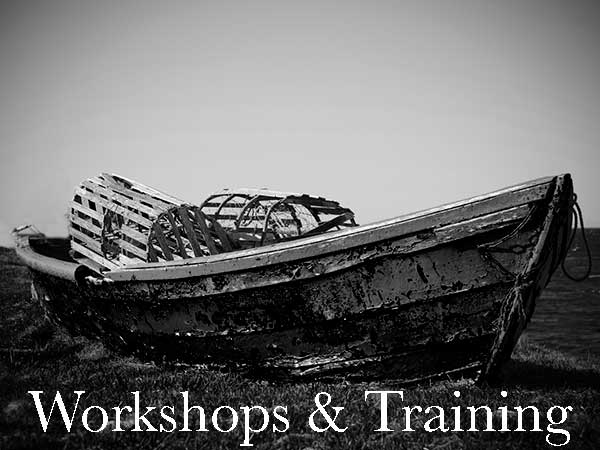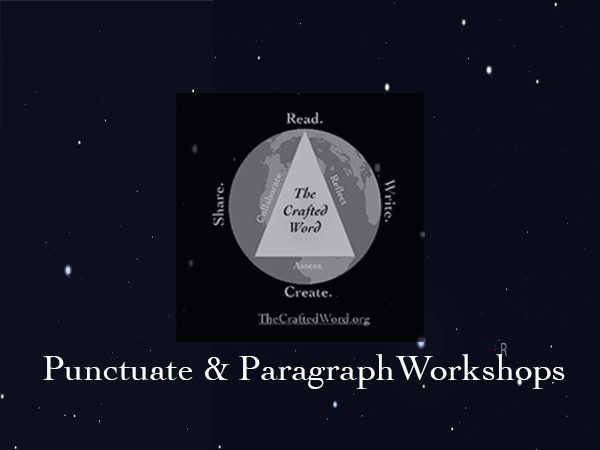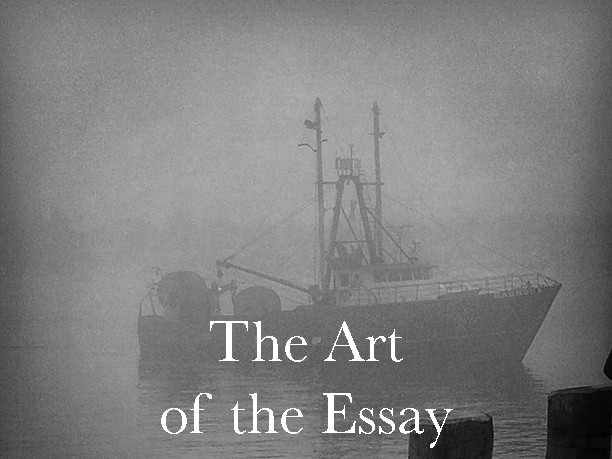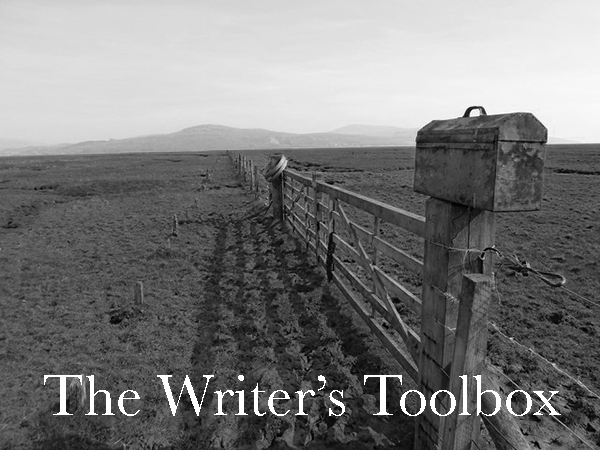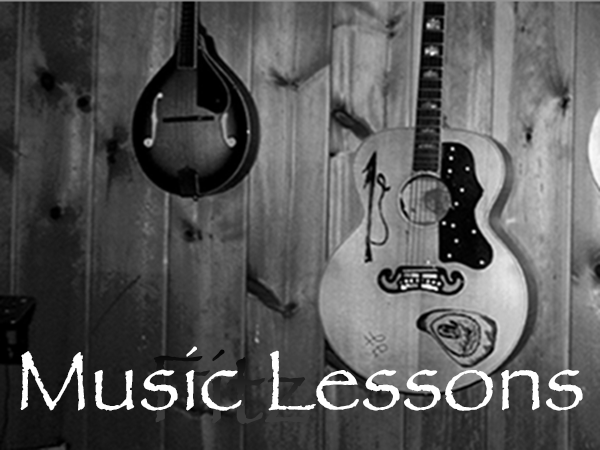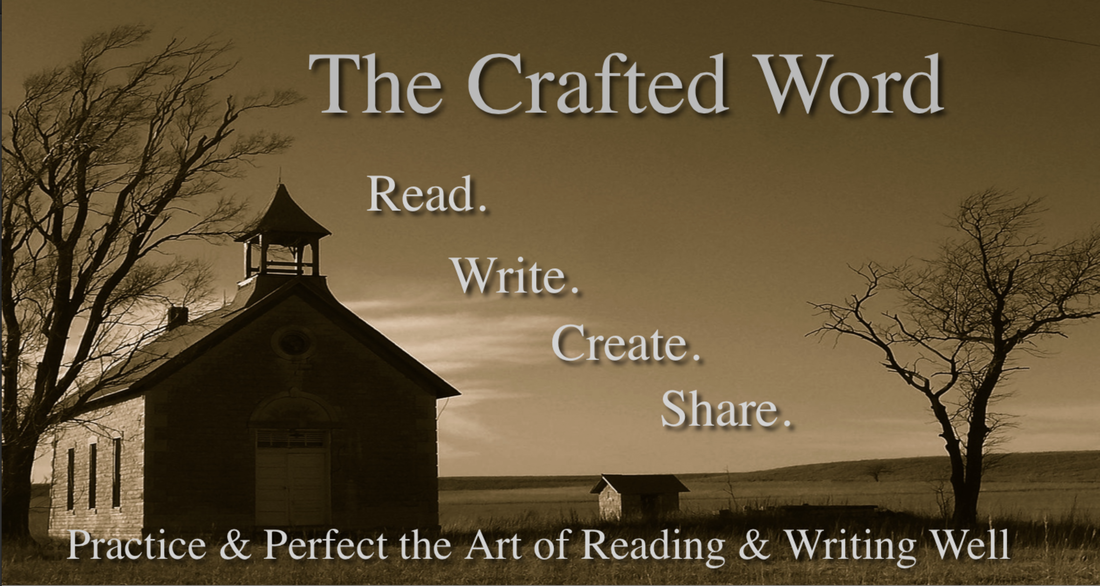
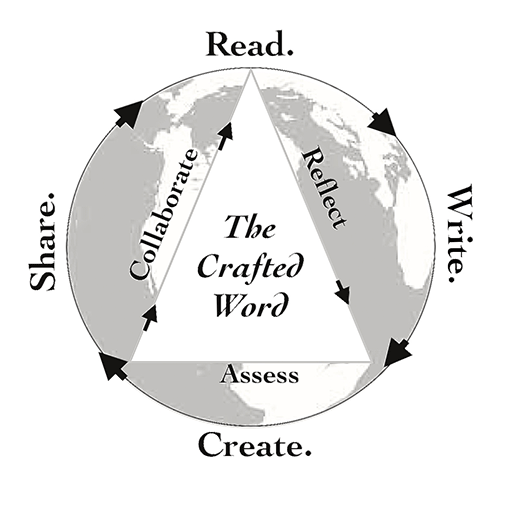
The Crafted Word
Teaching Traditional & Modern Skills for Reading, Writing, Creating & Publishing in a Digital World
Fitz’s Blog
Ramblings, Reflections, Essays, Poems, Songs, Stories, Lessons & Other Detritus of the Day
Transitions
To Create Effective Transitions in Essay Writing The Power of a Natural and Logical Flow The crazy thing about transitions is that we are already masters of transitions. All of us have been practicing and perfecting a natural and logical flow for as long as we...
Hope To Write a Literary Analysis Paragraph
To help you prepare to write our "Thoreau Essay," please read through the iBook I uploaded to iTunes U. You can also visit my web page on how to write a literary analysis paragraph.We will "start"our first paragraph tomorrow in class, though you are free to get...
Finishing Walden…sort of…
We are not finishing Walden, but we are finishing a good chunk of some of Thoreau's influential passages and philosophical statements. Before class on Thursday, upload the full abbrieviated Walden 1-4 and read the "rest" of the book slowly and deliberately. Highlight...
Getting Things Done…
You guys are a great class. I mean that sincerely. What you do need to work on is getting your work turned in when and how I want it turned in.By this point you should have turned in the Literary Reflections for the class periods so far this week. We can work on the...
Paragraphs…
From what I have read so far, I have really loved the reflections. Hopefully, you have posted these to your blog, so every can see and read the diverse—but focused—way each of you has approached the assignment. There is one thing that many of you need to...
Some Thoughts about Your Haiku…
I have had a go0d read so far reading your haiku. I have a couple of thoughts...I never quite know how to teach how to use specific imagery. When I say "specific" maybe I mean "real." because every reader--wants to "see" what you are seeing in a real way.avoid...
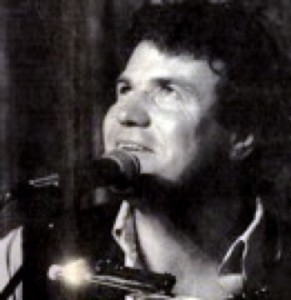 I have been teaching, writing, playing and performing for over thirty-five years, while during these last ten years I have been given the time and space and support (and funds) to create a classroom and pedagogy that through stops and starts and a deliberate evolution of ideas and practices has come to be known simply as “Fitz English.” I have always been somewhat of a traditionalist in my approach to what I teach, but I have always been driven to improve the classroom experience in a way that empowers students to become more confident, fluent, and engaged readers and writers; moreover, I have never “clung to my ways” or to any ways for that matter! When something worked, I tried to make it better. When something did not work, it went in to my overflowing bin of teacher trash–and a mighty big bin it is. I can only thank my students and an enlightened and indulgent administration for placing a sacred trust in my hands–for the learning and practice of effective and powerful writing and reading skills is a sacred trust, and a duty that any wise teacher lives through in every class he or she teaches. The seven guiding principles of The Crafted Word are the product of my own education in the hardscrabble reality of the classroom. The seven pillars: Read, Write, Create, Share, Collaborate, Assess, and Reflect capture the essence of what it takes to enable a more profound and enriching experience of a sustainable and dynamic literary life. I try to give my students whatever they need to flourish in their next academic year; however, I try even harder to build a foundation and approach to reading, writing and content creation that will serve and guide them throughout the odyssey of each of their respective lives. For a new person entering my classroom, the most noticeable feature of my classroom is what is missing–desks! There are no desks. There is, however, a large round table around which students can stand or sit on stools (not chairs). It is at this table where we meet to discuss the coming class period, to share the work we have completed, and to prepare for the coming project–and there is always a project to undertake. There is a large library of books arrayed along one wall surrounded by comfortable chairs. There are a few computers set on a standing bar; there is a widescreen TV on one wall. There is a stage set up with a green screen and mics and lights; there are two alcoves set up as recording studios–but there is no pencil sharpener; there are no reams of paper on a shelf; there are no blackboards or whiteboards, or posters hung on the walls–only guitars and banjos and framed artworks. There is–and there has not been–any paper shared between myself and my students for over ten years. Paper is simply not needed and, for me at least, is simply an inefficient hindrance to the work we do. For many teachers, the classroom seems like an anathema. The lack of paper seems foolish and unwise. The distractions of technology mixed with students plopped upside down and sideways on the floor and across the arms of comfortable chairs is more than they can handle. Few teachers are jealous of my room, yet I guard it jealously–though I am very eager and willing to share it (and the secrets it holds)–freely and openly. There is a great fear that real teaching and real learning cannot happen in a room where motion, action, and relaxation intermingle–where sitting takes a distant second to standing, where reading and writing on iPads, tablets–and even phones–is encouraged, where every essay is turned into a video, podcast, where a blog post is recreated in a multi-media portfolio, and where everything is shared with each other, oftentimes created with each other, and always respected by each other. If I sound like I am crowing like a rooster at dawn, I am; and I will keep on crowing until one of my students says, “This is too easy,” “I’m not learning anything,” or “You really should get another job.” I will keep on crowing until a parent can sincerely say, “My child did not learn enough or write enough,” “Where is the rigor or basic skills my child needs?” or “What a waste of a year my child had in your class.” If I have not crowed so loudly as to turn you away, keep scrolling and let me show you what I mean and how this approach can work in any classroom. I have the gift of a well-created classroom, but the essence of what I am trying to do could be accomplished in my backyard in a circle of pumpkins. The site right now is a work in progress (in fact, it will be my summer’s work) but please contact me you have any thoughts that can help me continue to build on this approach and, as they say, “Make it better.”
I have been teaching, writing, playing and performing for over thirty-five years, while during these last ten years I have been given the time and space and support (and funds) to create a classroom and pedagogy that through stops and starts and a deliberate evolution of ideas and practices has come to be known simply as “Fitz English.” I have always been somewhat of a traditionalist in my approach to what I teach, but I have always been driven to improve the classroom experience in a way that empowers students to become more confident, fluent, and engaged readers and writers; moreover, I have never “clung to my ways” or to any ways for that matter! When something worked, I tried to make it better. When something did not work, it went in to my overflowing bin of teacher trash–and a mighty big bin it is. I can only thank my students and an enlightened and indulgent administration for placing a sacred trust in my hands–for the learning and practice of effective and powerful writing and reading skills is a sacred trust, and a duty that any wise teacher lives through in every class he or she teaches. The seven guiding principles of The Crafted Word are the product of my own education in the hardscrabble reality of the classroom. The seven pillars: Read, Write, Create, Share, Collaborate, Assess, and Reflect capture the essence of what it takes to enable a more profound and enriching experience of a sustainable and dynamic literary life. I try to give my students whatever they need to flourish in their next academic year; however, I try even harder to build a foundation and approach to reading, writing and content creation that will serve and guide them throughout the odyssey of each of their respective lives. For a new person entering my classroom, the most noticeable feature of my classroom is what is missing–desks! There are no desks. There is, however, a large round table around which students can stand or sit on stools (not chairs). It is at this table where we meet to discuss the coming class period, to share the work we have completed, and to prepare for the coming project–and there is always a project to undertake. There is a large library of books arrayed along one wall surrounded by comfortable chairs. There are a few computers set on a standing bar; there is a widescreen TV on one wall. There is a stage set up with a green screen and mics and lights; there are two alcoves set up as recording studios–but there is no pencil sharpener; there are no reams of paper on a shelf; there are no blackboards or whiteboards, or posters hung on the walls–only guitars and banjos and framed artworks. There is–and there has not been–any paper shared between myself and my students for over ten years. Paper is simply not needed and, for me at least, is simply an inefficient hindrance to the work we do. For many teachers, the classroom seems like an anathema. The lack of paper seems foolish and unwise. The distractions of technology mixed with students plopped upside down and sideways on the floor and across the arms of comfortable chairs is more than they can handle. Few teachers are jealous of my room, yet I guard it jealously–though I am very eager and willing to share it (and the secrets it holds)–freely and openly. There is a great fear that real teaching and real learning cannot happen in a room where motion, action, and relaxation intermingle–where sitting takes a distant second to standing, where reading and writing on iPads, tablets–and even phones–is encouraged, where every essay is turned into a video, podcast, where a blog post is recreated in a multi-media portfolio, and where everything is shared with each other, oftentimes created with each other, and always respected by each other. If I sound like I am crowing like a rooster at dawn, I am; and I will keep on crowing until one of my students says, “This is too easy,” “I’m not learning anything,” or “You really should get another job.” I will keep on crowing until a parent can sincerely say, “My child did not learn enough or write enough,” “Where is the rigor or basic skills my child needs?” or “What a waste of a year my child had in your class.” If I have not crowed so loudly as to turn you away, keep scrolling and let me show you what I mean and how this approach can work in any classroom. I have the gift of a well-created classroom, but the essence of what I am trying to do could be accomplished in my backyard in a circle of pumpkins. The site right now is a work in progress (in fact, it will be my summer’s work) but please contact me you have any thoughts that can help me continue to build on this approach and, as they say, “Make it better.” Contact Fitz!
Tell Your Story. Tell It Well.

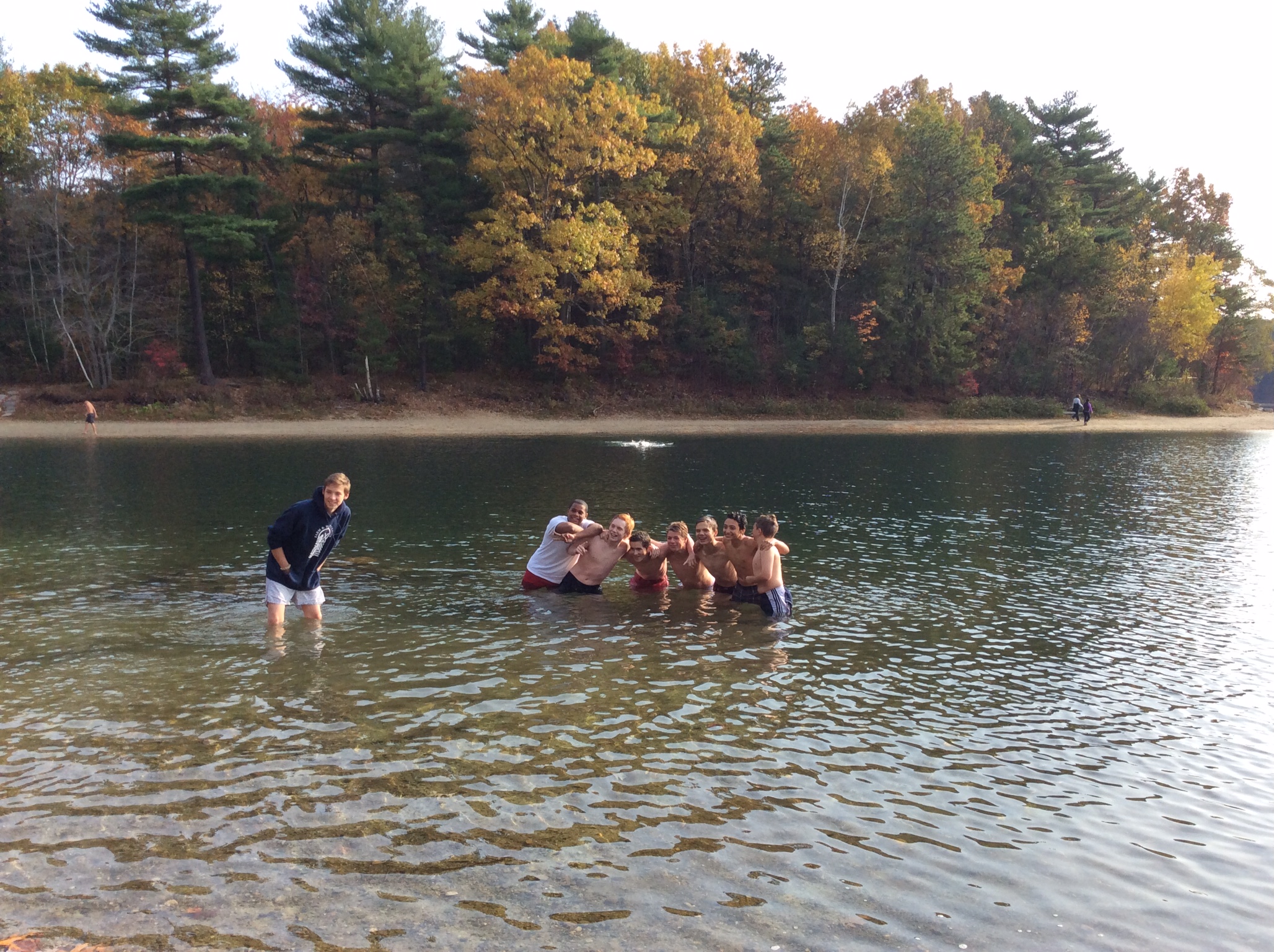

Think hard, reach down deep in your heart and soul for a way to kill these suitors in your house,
either by stealth or open combat. You must not cling to your boyhood any longer— It’s time you were a man. [Book 1, Lines 338—342, The Odyssey]
Read well; read deeply, and read often. Three short phrases sum up the greater part of what is basic to an understanding of a complex and evolving world. To read well you need to read closely, to think imaginatively and to allow yourself to be challenged intellectually, emotionally, culturally, and politically. To read deeply is to search for meanings, morals and messages within the images and actions within a text . It forces you to decipher the metaphors that cling to the twists and turns of plots, or it prods you to understand the spartan logic of a philosopher’s mind as he or she lays out a reasoned reflection on the conundrums and constants of life. To read often and well is to place reading before the lesser pursuits of the day. Second only to the feeding and sheltering of the body is the feeding and nurturing of the mind—and there is no greater food than a piece of great literature! Not all of you have the courage to read a good book, and that is a travesty only to yourself. Some of you have already blocked the gates to the greater reservoirs of your mind. How can I teach you anything? How can I expect you to be moved when you are anchored in your safe and shallow harbor? If you are not touched by a book, then don’t touch it—don’t wound eternity with an idle mind. “But,” you say, with exasperation; “you give us these books; you force us to read them. How can we be touched when we are force-fed what to read? How can there be romance when there is no passion? What teenager does not want to rebel against the directives and edicts of a misguided teacher?” Therein lies the rub: “Misguided!” What if the teacher is not misguided? What if, on the contrary, he or she is very well guided by life, instinct, and vocation? How could you then, not listen? Why wouldn’t you listen if there was some measure of hope that this teacher could guide you to a greater understanding of life than you ever dreamed possible. I know that at a certain point in my life I let Henry David Thoreau be my teacher, and only then did I realize that it was cynicism and laziness that kept me from accessing the opportunities created by reading the great works of literature, and so I began a thirty-two year adventure of reading—a journey where I still feel that I am barely out of the harbor! The first book was The Odyssey and I’m damn sure it will be the last—if I have any control over it. Life is too precious to chatter and blather with fools and strangers. If you are unwilling to face the challenges of The Odyssey, go back to your face book page and gossip with the idle minds of your generation—and mine, for that matter. If you are afraid to become a man, then don’t become one.
Check to our rubrics to help your reading–and your writing about reading…
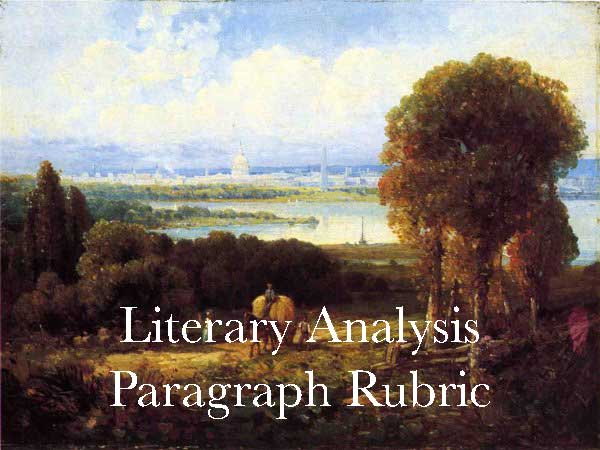
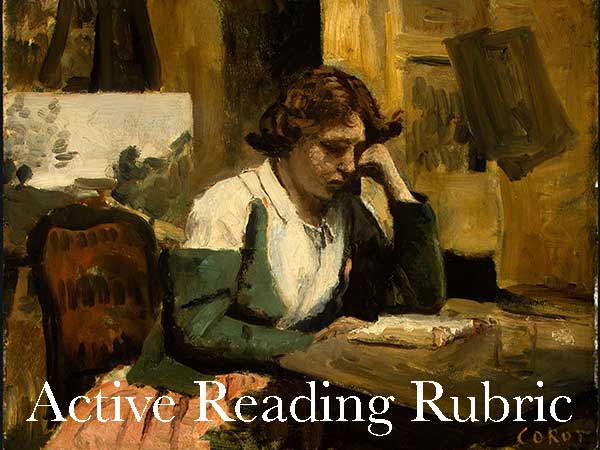
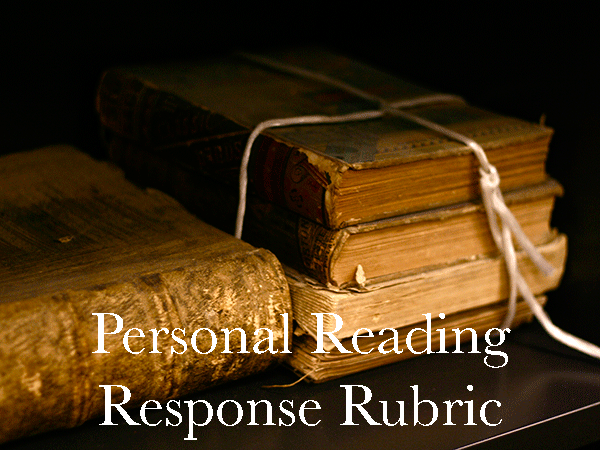
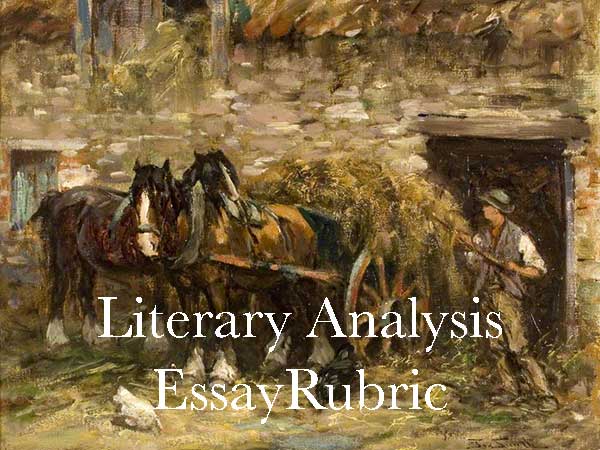
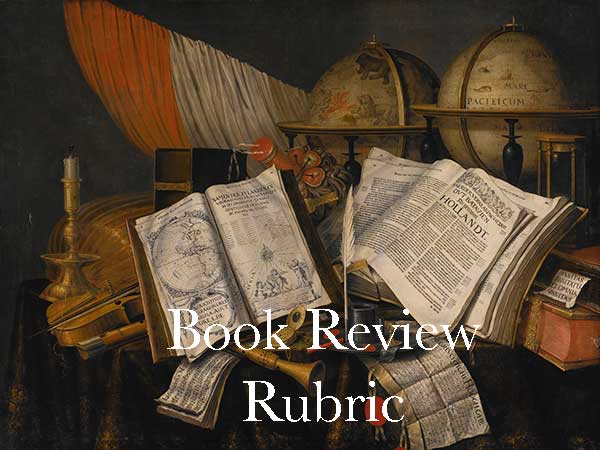
Learn at Your Own Speed with Videos, Reading Rubrics & Assessments…
How to Write a Literary Analysis Paragraph
How to Write a Literary Analysis Essay
Don’t Do It
I was eighteen and designing a production line for making stepladders at Fitchburgh State College—the only college I could afford, and probably the only place that would have me. I remember thinking, ‘Man, this ain’t no life for me.’ I barely had a working idea of what life meant, but I was pretty sure it meant I didn’t have to do something without any meaning or purpose—and I certainly didn’t want to spend my life designing a better stepladder.’ But, what did I want to do? Did I have the courage to even make a change in my life? If I had read The Odyssey, I might have known what to do; I might have known that I was on a heroic journey and that my call to adventure was the churning confusion in my gut, and I might have known to look for a helper and an amulet to get me over the threshold—that no quest is real until you realize that you cannot go it alone. My helper was my English professor. I can’t even recall her real name, but she was old and sweet, and so we called her Aunt Bee—and she was sweet enough to ask me to stay after class to meet with her one day early in the fall. (Although I was petrified she was going to have me expelled for charging five dollars to any kid in my dorm to write their English papers for them.) Instead, she held a paper in her hand that I had written, and a paper in which I actually cared about what I wrote. The day before she had told us to take a walk through the city and then write about the walk. Most of my classmates stayed in the dorm, laughed about how naive Aunt Bee was, and wrote some insipid scrawls that they thought would qualify as an essay—or they tried to get me to write an essay for less than five dollars. But I took the walk. I wandered through the poorest streets in Fitchburgh; I sat on front steps with little kids and old men; I sat with drunks and dreamers, and I wondered. I wondered if my walk was actually real, or if I was even real, and then wrote some story about a kid who couldn’t tell if he was awake or dreaming or even which state of mind he wanted to live in. Aunt Bee shook this paper in my face and said bluntly, “You shouldn’t be an industrial arts major. This [shaking the paper even closer to my face] is your gift!” Never once had anyone told me I had a gift of any sort, except perhaps for whittling birds out of scraps of soft pine. I don’t think Aunt Bee knew how ready I was for a change—any change. I seemed to take her off guard when I responded, “Okay. So what do I do?” “Leave this place,” she answered. So I left. Never had a decision been so easy and so hard at the same time. It was easy because I knew in my heart that Aunt Bee was right, but it was hard because my parents thought I was throwing my life away—and I was: I threw my old life away and charted a new course into a world of words and literature—a world that I really knew nothing about. That decision in 1976 is the reason I am writing this to you today. It has been the proverbial long and winding road, but I have never been let down by a book or hobbled by anything I wrote, even though much of what I’ve written is pretty dumb and forgettable. There was very little academia in my new journey. I learned to write by writing. I learned to write better by listening to what people thought and felt about my writing. I joined some writing workshops where each week each person would bring in some poem or story to share with a circle of other would be writers. I learned what worked in my writing and what didn’t work—at least to the small universe of my writer’s circle. I never thought I was a good writer, and so I was never really bothered by what people said. I just thought, ‘Cool. I guess I should change this….’ Even after a few workshops, I still never thought I was a writer, until I one day a friend introduced me to his friend by saying, “This is Fitz. He’s a writer.” I protested that I was not a writer, and my friend just said, “Then what the hell else are you?” “I don’t know. An apple picker, I guess,” for at the time I was picking apples with a crew of Jamaicans in a New Hampshire orchard. “At any rate, Fitz is a better writer than he is an apple picker. That much I’m sure,” my friend said, sealing the deal and sealing my fate—a fate which, by and large, has been good to me. But be careful, for you, too, might become a writer; and once you become a writer, you can’t turn back; you can only turn away. Such is the power and allure of writing. If schools really knew what happens when a kid becomes a writer, they would ban the teaching of writing. It’s like giving a ten year old the keys to a bad-ass car; it’s like pointing across a canyon and screaming, “Jump!” It’s like opening the window and pointing in every direction and saying, “This is all you need to know and everything you’ll ever try to know.” Writing is unfettered and audacious freedom. Don’t do it.
Some writing rubrics
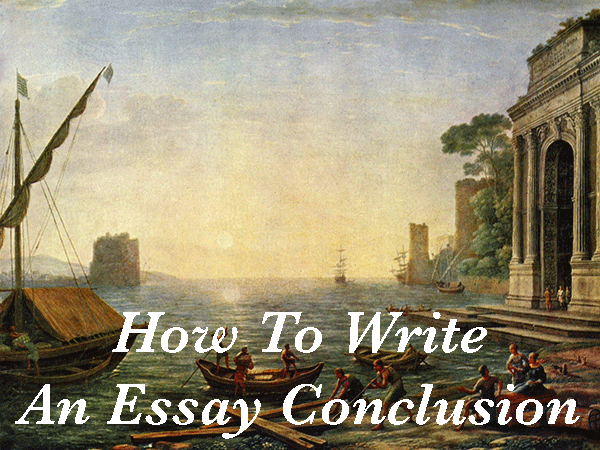
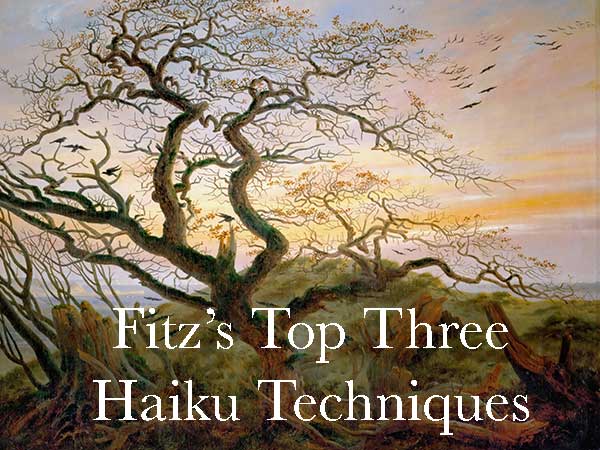

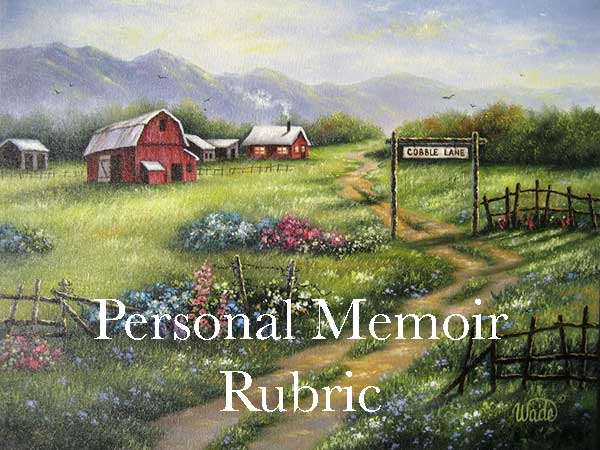
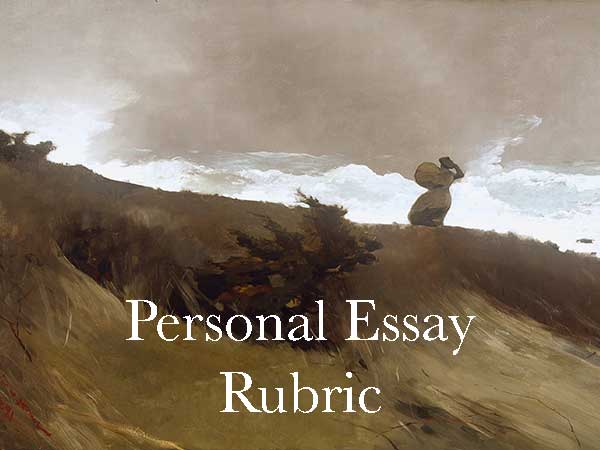
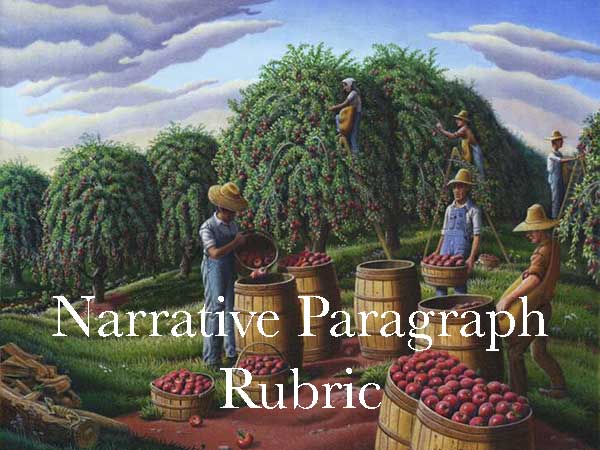
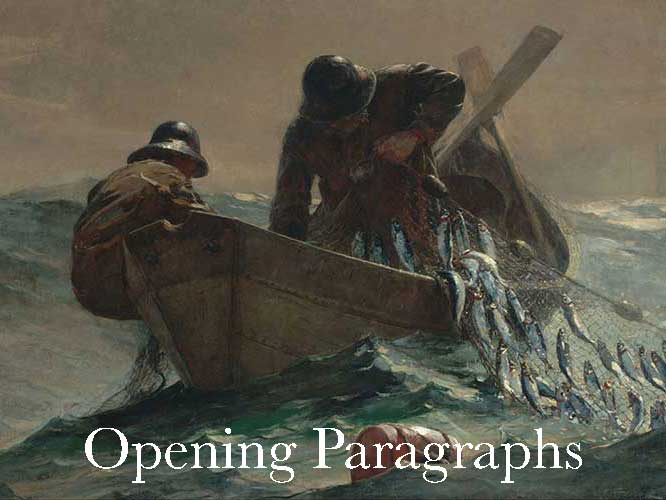
The Paradox of Rubric-Based Writing
Wow, what a boring title…rubric-based writing…I am sure this would be a big seller on Amazon: “Buy Now and Save on Fitz’s Narrative Paragraph Rubric!” Frustration guaranteed! Used by hundreds of angry students…
Learn How To Tell Your Story in a Single Paragraph…

KISS
Keep It Simple, Stupid!
One of the ironies of my classroom is the notion that what we do and create in class is “complicated. Far from being complicated, I feel it simplifies and unifies the class in a common direction with a clarity of purpose and approach.
We are in a brave new world of creative expression. The very idea of “words” is more dynamic and flexible than at any time in our history. The classroom no longer needs–or should be–a series of desks full of students laboring over sheafs of paper churning out writing assignments that are generic, predictable and, sadly, often pretty dull. As teachers we now have tools close at hand that allow our students to craft and create their ideas, passions, research and conclusions in new and creative ways, and all of us–students and teachers alike–need to recognize this new paradigm and nurture the inner talents and potential of our students. The Crafted Word is committed to sharing these tools and approaches with anyone interested in advancing the time-honored traditions of good writing and effective rhetorical techniques with new, interesting and compelling approaches to content creation.
“I spent years thinking I was dumb and could not write, but the stuff Fitz helped us create in class let me finally say what I always wanted to say in a really cool, fun, and interesting way!”
Write A Haiku
Write An Essay
Create Compelling Content
Making the Ordinary Extraordinary
How to create a cool Portfolio in a Weebly website…
Weebly is just one of several easy to use and build website and portfolio platforms. My students use Weebly to crete digital portfolios that contain their personal blogs, that allow them to post (and access) assignments, and that allow them to create beautiful and unique portfolios to showcase and share their work with each other–and the world! The key is to give students (and teachers) the time to “play around” and figure out the platform. I have yet to meet a student who has not been able to use Weebly to create awesome sites that are full of content, character, finely crafted writing pieces and visually stunning multi-media projects. Here is an example of a video memoir created by an eighth grade student…
How To Create a Digital Portfolio
Failing to plan is the same as planing to fail
~Ben Franklin
Someone is not just looking for you; they are searching for you, and you are only one one regrettable statement or stupid posting away from your judgement, and hence your character, being questioned by an admissions committee, potential boss, or anyone else casually (or intently) searching your name on the web—and it is going to happen! The irony that the only thing worse than a questionable digital presence is no presence at all. While there is some nobility in being off the grid, there may also be precious little else to set your particular genius and passion apart from the masses that are arrayed beside, before and behind you. A powerful and compelling digital portfolio puts your proverbial best foot forward. Your digital portfolio collated and curated over the course of years makes a powerful statement of who you are, what you value, and what you have accomplished. A digital portfolio shows that you give a damn, and that you have been giving a damn for a long time. And that is a powerful reflection of your inner character, your persistence, and your values. The Digital Portfolio Workshop guides students through the process of creating a digital portfolio that can grow and evoke over time. An effective digital portfolio reflects not only who a student is, but it also captures the depth and breadth of who he or she has been and aspires to be. A compelling digital portfolio combines the archiving and presenting possibilities of a website with the dynamic and engaging qualities of an active and interesting blog. And it is easier than you think to get it all started. The harder part is to keep it going and to let your portfolio morph and change and grow with the same naturalness as you morph and change and grow. Enough talking: time to get started. I waited unit today to send out the information for the summer work as I know some of you are just finishing your school year. This summer, The Digital Portfolio Workshop is designed to build on your previous websites and blogs or to help you start at ground zero and start something totally new. I will create a homepage for our group on The Crafted Word site. A bit different from previous years is that you will have assignments that will cover different areas of digital content, including,
- Maintaining a dynamic blog that includes self-generated posts and responses to writing prompts.
- Creating, tweaking, organizing and maintaining a dynamic blog. (Notice how I love the word “dynamic?” When something is dynamic, it means it changes and grows and is constantly giving off energy.)
- Creating video posts that include podcasts, narrative essays, and creative pieces.
- I will share a folder with you that includes assignments, tips, and ideas. This folder also has a conversation thread that will allow us to stay in touch with each other in a quick and easy way.
First Steps To a Digital Portfolio
Adding New Content, Resources, & Interactivity
Unlike many websites, which remain fairly “static,” (unchanging) a Portfolio is intended to be dynamic (meaning it changes and and evolves) as you—the artist—create new content that you wish to share and archive. The key to a successful portfolio, which gains, keeps, and expands followers is to create an expectation of new content and opportunities to experience new things within that portfolio. Your blog, at least for this summer, will be the landing page for your portfolio because it creates the most dynamic possibilities and generates the most interest for your potential audience. As your portfolio grows and diversifies this dynamic might change. Creating a “way” to keep new content on your blog is essential; otherwise, your blog will become more of a private journal and portfolio of your work—which is not a bad use for a blog, but it’s like keeping a Ferrari in your garage. As a writer myself, I struggle with this in a mighty way–especially in the summer when I am so busy managing blogs and classes that it is hard to find the time and energy for my personal blog. The second stage of building your portfolio is to organize your blog and portfolio and add content that reflects the theme and direction you want to take your portfolio. It is often said that imitation is the greatest form of flattery, so the first step is to research how other blogs do something similar to what you want to do: My hope is to have our community of Portfolio Creators up and running by the beginning of next week. Up until then, please be in touch with me and do what you can to work on creating and/or editing your site.
- Begin and Maintain a Way to Stay Organized:If anybody knows me well, you will know that my life is a constant juggling of different avocations and vocations. To help my personal circus, I use a program/app called Evernote.http://evernote.com It is a well-established company that has made a product that helps people create, store, clip from the web, and manage anything that is or could be web-related. I have tried almost everything out there, and Evernote is, for me, the hands down winnner. It works on any connected (and unconnected) device. I am writing this on my IBM laptop; maybe I will edit it at home on my imac, or an my ipad or iphone. I just shared a notebook of songs with a Jamaican friend working with Evernote on his Dell tablet. In short, it works on everything–and it works really well. Try Evernote. The basic package is free. Use it to manage your blog. We can also share content with each other by creating shared notebooks. It is a useful tool for any person, but especially so for students, bloggers, researchers and any other kind of “content creators.” Let me know how it works for you AND how you are using Evernote in your life. That said: if you have a way other than Evernote that is equally good—or better—you are welcome to use that system. Just let me know what it is and how you use it.
- Create or Rethink Your Portfolio and Blog: For those of you who have worked with me before, you are either using a WordPress blog or a Weebly-based website. I think both platforms are awesome, and both are able to create beautiful and inspiring portfolios. More often than not I recommend using Weebly as it is simple to use; it has numerous themes that give you a lot of options for how your site “looks,” and it allows for easy imports of photos, audio, videos and other cool and interactive elements—and it also has a built in blog. A Weebly site is a website with different links and pages to hold different content. I recommend Weebly for people looking to create a portfolio with different interests and offerings. I use Weebly; however, if I was primarily a blogger I would use WordPress. WordPress is probably the most widely used blogging platform in the world. If your main goal is to to blog in an ongoing and continuous way, then I would go with WordPress. It is the quickest and easiest way to get your voice out into the world in a professional and compelling way—plus, it is a better platform to “take with you” as you move through the different stages of your life. It is also possible to have a mix of the two: you could use Weebly (or Wix or Squarespace or any other website builder) for your portfolio, and you could link to a WordPress blog.
Redesign, recongifure, and rethink your blog by adding new content, resources, and new interactivity. Try to include all of the following types of content. It might take some “figuring out” on your part, but I will be glad to help as much as I can. Remember “KISS” [keep it simple, stupid!] There is a temptation to include everything from aisle nine in Home Depot on our sites. As you add new content to your blog and to the sidebars you may need to rethink and reconfigure how you do things. A good portfolio is pleasing to the eye, easy to navigate, and interesting. Too much clutter is too much clutter where good and important content gets lost in a sea of marginally important—and sometimes completely unimportant—content. (For years I always had a calendar on my blog, which took up a chunk of real estate, but one day [major epiphany] I thought, “I bet most people already know what day it is!” so off it came, and it was missed and noticed by no one but me—who didn’t need it anyway.) Content includes:
- Regular Posting: if you think about the websites and blogs you visit, I would bet that the vast majority of them have new “stuff”” to read in an almost daily way. A mixture of short informational post and longer reflective posts is fine. The key is new, new, new (even if it is something you are “stealing” from yourself!
- Interesting and Relevant Links: It is important that your blog be more than just about you. People use the web as a resource to connect and interact with the world at large. Create a set or sets of links to sites that you feel are inspiring, helpful, or just plain interesting to people who share your interests
-
- Add Pictures: a picture paints a thousand words, so use pictures in tasteful and interesting ways. Figure out how to get the text to “wrap” around your pictures; otherwise, it looks a bit tacky and unprofessional. If pictures are an integral part of your blog, be sure to allow people to click on a picture and get a full size image.
-
- Slideshows: If pictures are an important part of any post, or if pictures are a main feature of your blog, use slideshows to creating thematically unified presentations for your audience.
- Video: People love videos, and it has become very simple to add video content to blogs, so make a concerted effort to find (or make) videos that relate to what your blog is trying to do. My big peeve is video without a written summary to go along with the video. We are often in places where we can’t play a video, and the words: “check out this video” is not a good or satisfying way to introduce video content. Instead, give a brief summary that will give your audience a reason to come back later when they “can” listen to and watch the video.
- Audio: There is a reason we speak with each other instead of simply write to each other: We love the sound of the human voice; we love the intimacy and magic of sound waves woven into words that reach deep into our hearts, psyche, and soul. It is so cool to me to be able to “hear” the author “read” what he or she has written. Making some of your writing pieces available as podcasts allows your audience to download your posts and take them on the road, or the audio simply add to the power of your poem, essay, or reflection. The bottom line is that there is no downside. Creating audio of any writing piece is an amazingly effective way to proofread any writing piece.
- Interactivity: It should be easy for anyone coming to your blog to interact with you and with other people coming to your blog. Adding a chatbox widget, a guestbook, a forum a poll, or even just an email link is important part of any good blog.
This is a lot of work, but it is important, even if just to bring you to the level that you can do all of this. As always, keep in touch, and let me know if you are having any issues or problems.
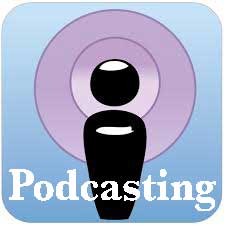



Take Control of Your Digital Footprint
Teacher Workshops, Portfolio Development & Blogging Communities
Workshop: Bring Blogs To Your Classroom!
Let Kids Write An Exploration of the Promises, Potential (and Pitfalls) of Using Blogs in the Classroom
I have been blogging with my classes of eighth and ninth grade boys for ten years now. I have watched and read and cajoled and pleaded enough to get some many millions of words out of them. The main thing I have learned is that these students are more than willing and eager to write, especially when given freedom and ownership. Without those two basic rights I don’t think they would ever have tapped into or experienced the unfettered joys and rewards of writing for the sake of writing. I’d get my share of essays, book reviews, and research papers, some bits of poetry and personal narratives, but I would never have what I have now—a veritable treasure trove of rambles, reflections, and well-crafted (along with plenty of not so well crafted) bits and bytes of real experiences that flesh out the wholeness of their lives within a community of like-minded and incredibly supportive comrades. In this sea of words, they practice and play and learn what it really is to be a writer; and like any writer, they are students of the craft, not merely students of the teacher. My basic plea to any teacher or school that wants better writers is simple: let kids write. It is what they want and need to do, and to throttle that primal passion is to shortchange their lives and muffle those voices of youth that so desperately need to be heard.
I have always hated the word “blog” because it conjures up a stereotype of a Wild West in the classroom. It implies an anarchy that cannot be controlled and harnessed. It gives rise to a vision of the misguided leading the misdirected towards some fateful end. Early on, I used terms like “online journals” and “directed writing communities” to mollify the fearful administrators and my reluctant peers and parents. But, really, it has always been “blogging.” It is also an online journal and a guided writing community; moreover, it is newspaper, library, resource room, hangout, literary magazine, curation and assessment tool, content management system, as well as a stunning portfolio of what is possible—and what some have claimed was impossible—in a classroom of young teenagers. The proof is there. It is not an idea or a dream. It is happening right now, and blogging in the classroom is an awesome pedagogical tool and a wise strategy that allows all students learn to love writing while developing the fundamental mechanics and traditional grammar and editing skills. My workshop is designed to be practical and applicable in an immediate way, while also exploring how blogs help students to develop as fully dimensional writers who are comfortable and confident as both expressive and formal writers. The presentation will include:
- 1. Ownership, Freedom, & Responsibility: the importance of personal and shared blogs.
- 2. Show how blogs create a multi-dimensional workspace for students and teachers.
- 3. Show how to set up and maintain a blogging community. (Individuals will be encouraged to create a blog on the spot, if they have a tablet or laptop with them.)
- 4. Show how blogging platforms like WordPress, Movable Type, Blogspot. Weebly, and Typepad can serve as complete content management systems and digital portfolios.
- 5. Show some tricks of the trade: embedding video, quizzes, discussion threads, pictures, and links to create a compelling and dynamic teacher’s blog that can serve as a portal and resource area for all class activities.
- 6. Lead a philosophical discussion about the pitfalls and promise of online writing communities as the centerpiece of an English curriculum.
John Fitzsimmons is an English teacher and woodshop teacher at The Fenn School in Concord MA. He is also an award winning folksinger, published poet, essayist and storyteller, and has been called “A master of folk” by The Boston Globe; and if the presentation is dull, he can always sing songs instead. http://johnfitz.com http://TheCraftedWord.org Tel. 978-793-1553 Email: jfitzsimmons@fenn.org
Crafted Word Digital Portfolio Course
Digital Portfolio Course
An Eight Unit Project-based Workshop To Build a Better Portfolio
Some examples of what we can help you create…
Create spoken word productions…
Create powerful video essays…
Danny, Jimmy, & Me
& The Art of Collaboration
I
 Mrs. Roeber never seemed to let Jimmy go outside, which, to my thinking as an 11 year old, was why he was so smart. Most days after school, I’d rush two houses down the street and get Danny Gannon to come out and play. Then the two of us would go to Jimmy’s house next door. If Mrs Roeber answered, she would always be polite and say something like, “Jimmy needs to catch up on some science work. Perhaps he can play later.” If Jimmy answered, he’d usually be out of breath from running upstairs from his basement “office” and plead with us not to give up on him—or at the very least go out back and talk to him through the basement window. So me and Danny would sneak out back and lay on our stomachs on the pokey grey gravel outside his basement window. Five feet below, Jimmy would be doing his work at his workbench (which, in all honesty, was a pretty cool place). I always wished I was smarter, so I could do his work for him and get him outside to play. I was better than Jimmy at a lot of things, but those things never got graded, and most of those things you couldn’t appreciate until “later in life.” But, to my Tom Sawyer way of thinking, I preferred being outside and average to being inside and smart. Danny was an outside kid, and smart, too, and that always troubled me, but not enough to let it call my inside/smart: outside/not smart philosophy into question. Danny’s voice was always the one that tried to tell me that the sledding jump was too high, or that branch would not support my weight, or those snakes would bite, or that we couldn’t run faster than a nest of bees we just destroyed. Once we got Jimmy outside, he was like a mad scientist: ”We’ll, just have to see how high Fitz can go on his sled,“ or, ”I’ll distract the snake so Fitz can grab it from behind,“ or ”Bees have been clocked flying at 80 miles per hour.“ Looking back, we probably seemed like the gang that couldn’t shoot straight, and we did tend to go our different ways as we grew older, but we always still manage to reconnect somehow, and it doesn’t seem like we are a day older. It’s kind of hard to put into words because Danny and Jimmy might not be the best friends of my daily life, but they will always be the best friends I need. Just thinking of the three of us together is like a window opening to a cool and welcome breeze. And the coolest thing is the window is always there. It might be that the only thing we actually had in common was living next door to each other, but still, we made it work; we made it real, and we made it last. No choice. No problem. We did it together.
Mrs. Roeber never seemed to let Jimmy go outside, which, to my thinking as an 11 year old, was why he was so smart. Most days after school, I’d rush two houses down the street and get Danny Gannon to come out and play. Then the two of us would go to Jimmy’s house next door. If Mrs Roeber answered, she would always be polite and say something like, “Jimmy needs to catch up on some science work. Perhaps he can play later.” If Jimmy answered, he’d usually be out of breath from running upstairs from his basement “office” and plead with us not to give up on him—or at the very least go out back and talk to him through the basement window. So me and Danny would sneak out back and lay on our stomachs on the pokey grey gravel outside his basement window. Five feet below, Jimmy would be doing his work at his workbench (which, in all honesty, was a pretty cool place). I always wished I was smarter, so I could do his work for him and get him outside to play. I was better than Jimmy at a lot of things, but those things never got graded, and most of those things you couldn’t appreciate until “later in life.” But, to my Tom Sawyer way of thinking, I preferred being outside and average to being inside and smart. Danny was an outside kid, and smart, too, and that always troubled me, but not enough to let it call my inside/smart: outside/not smart philosophy into question. Danny’s voice was always the one that tried to tell me that the sledding jump was too high, or that branch would not support my weight, or those snakes would bite, or that we couldn’t run faster than a nest of bees we just destroyed. Once we got Jimmy outside, he was like a mad scientist: ”We’ll, just have to see how high Fitz can go on his sled,“ or, ”I’ll distract the snake so Fitz can grab it from behind,“ or ”Bees have been clocked flying at 80 miles per hour.“ Looking back, we probably seemed like the gang that couldn’t shoot straight, and we did tend to go our different ways as we grew older, but we always still manage to reconnect somehow, and it doesn’t seem like we are a day older. It’s kind of hard to put into words because Danny and Jimmy might not be the best friends of my daily life, but they will always be the best friends I need. Just thinking of the three of us together is like a window opening to a cool and welcome breeze. And the coolest thing is the window is always there. It might be that the only thing we actually had in common was living next door to each other, but still, we made it work; we made it real, and we made it last. No choice. No problem. We did it together.
II
Life was pretty simple with Danny and Jimmy and me. There was no forethought in doing things together. It was more just some manifestation of a primordial DNA strand that we responded to with a visceral enthusiasm bordering on mania. We are born to be tribal in nature. We expect and need to be a part of a community, for we know in our bones and marrow that we really can’t go it alone. There is no Huck without Jim; there is no Odysseus without Athena, and there is no you without some hand that will pull you out of the muck you have made of your life. Thank God for the primitive man patiently stalking some larger prey to have the primitive women scrounging for tubers, berries, grains and millet, which no doubt provided the greater sustenance. We live and breathe a collaborative atmosphere of trust and unfathomable magnanimity. Then why I did I always hate group projects, but, more telling: why did I change my mindset and my actions? I hated group projects because they never seemed like group projects. What seemed in theory to be group work was really like some industrial factory spewing its incessant belching of traditions with an unequal and unsatisfying distribution of work and wealth, where the smart kids continued to be rewarded the lion’s share of honors, while the poor students (myself especially) continually paired themselves with a misfit tribe of friends who accepted the inequities of the classroom as a normal and an immutable reality of life. Danny, Jimmy and I went to the same schools: Jimmy was—and still is—brilliant beyond my wildest dreams. Danny, too, seemed way smarter than me and probably smarter than most of the smart kid, though tempered with a shy and steady reserve (which by teacher default kept him from the brilliant crowd) that often forced him into our regressive and unrepentant tribe. As close as the three of us were in the ecosystem of our townie neighborhood, our schools erected barrier after barrier to keep us apart. While in school those walls did an admirable job of keeping us apart, and so we were only able to collaborate in our feral joys outside of school. Jimmy was smart, but not arrogant, and never willingly sought the tribe that formed around him, for when the academic birds of a feather were called to gather together, he was soon surrounded by the peacocks and strutting roosters of Concord, all brilliant in their own ways and inclinations, while my tribe and I wore our B’s and C’s and D’s like gang tattoos on our bruised and battered torsos. Really, not much has changed between now and then, and while kids nowadays are more polite and empathetic, and at least begrudgingly inclusive, the iron curtains in our classrooms are still there–just more subtly erected. The academically accomplished kids are almost insanely driven to preserve the status quo—and if paired with the less accomplished, they will go to extreme lengths to do all of the work themselves. They do not want their brilliance to be diminished by including the less accomplished, less fortunate, and less able, and they will labor far into the night to correct the sloth and ineptitude of their partners. Ironically, it is an ignominy that they will suffer in silence, mostly because “collaboration” is part of the rubric—and in the end they all need to say it was a collaborative effort, and kids like me who simply sprayed the red paint on a smoke-spewing model of Mount Vesuvius remained mute in the complicit code of silence that dictated our lives. So the rich preserved their wealth, while the poor squandered the chance to make a mark on their yardstick of time. The paradigm was set long ago: one law for the rich; one for the poor. It always seems strange and telling that the rich suburban and private schools constantly tout the quality of their students and teachers, when in reality that are just exposing the “quantity” of wealth and resources at their disposal. It used to piss me off, and I was satisfied in a smug way that at least I saw through the smoke and mirrors, until a point in time not long ago when I realized that, as Jesus said, “There will be poor always,” and I just needed to redefine what wealth really is and how it is spread around a classroom. I needed to unearth the inherent wealth in every kid I taught and see every one of my students as a treasure trove of possibility and make everything they did together engage that same passion of Danny, Jimmy and me hucking stones at bee’s nests. Every kid has to have a pile of stones to throw at the nest and the legs to run as fast as he or she can; otherwise, there is no skin in the game, no shared risks—and, ultimately, no shared triumphs.
III
Every classroom in every school on the planet is a blessed mix of possibilities—rich or poor, enriched or impoverished—with a mix of talents, drive, will—and more than a share of abnegating responsibility. As a kid, I hated group projects, and this hatred has fed my myopic biases for the past fifty years. They sucked as a student because I was never a full part of the group—and as a teacher, the group projects sucked because I would see the same inequities I despised perpetuated in my own lame assignments. I kept unleashing the same monster that swallowed me in my childhood. I was stuck in the stream of my own inbred traditions, though convinced I was nobly doing my duty as a teacher. My epiphany came when I realized that I never really taught what the word collaboration means. None of us can grasp the wisps of what we don’t understand, but I had aways just assumed that we had a common understanding of the word—to do things together (whatever that really means) but while reading and teaching Moby Dick with my ninth grade classes, I found myself one day discussing the crew of the Pequod—and what a wild mix of nationalities it is: native american harpooners, dreamy adventure seeking deckhands, carpenters, sail menders, lookouts, blacksmiths, cooks and mates all bound up in a common adventure. Roles were defined, but in the fray of the chase every man took to the boats towards a common and fathomable goal. And what a success it was until the monomaniacal Ahab stepped to the deck and pointed the Pequod in his obsessive direction—to kill the White Whale. What was collaboration became duty and fate. In discussing that twist of the plot, we started a conversation about what collaboration really is, and by the convolutions of discussion, we extended the metaphor of Moby Dick to help us define what is meant by collaboration. Collaboration is a shared adventure with shared rewards wherein every person is due his or her rightful share—the share agreed upon before setting foot on deck. No collaborative effort is inherently equal, for our skills and strengths on any given project are too disparate—nor will the rewards ever be the same for we will alway reap in proportion to what we sew and tend and what we sign on to do.—but the journey and the chase can and should be exciting and rewarding for everyone, and no one person should ever be allowed to alter the common purpose of the voyage, and every person has to accept the mundane roles on quiet seas and rise from the forecastle when all hands are needed on deck, and every man has to drop everything and pull on the oars in precise rhythm when chasing the whale—and, most importantly, every person needs to be on that ship for the length of the voyage. The Pequot’s crew was hoping to sail home to Nantucket with a belly full of oil that could be measured and assessed down to the last drop, and every part of that motley crew would know and expect, and receive a fair share of the reward. So now I not only love group projects, but I believe that they are the heart and soul of my classroom. They are what binds us together as a community. They are opportunities to share strengths and work through weaknesses and differences. They help us recognize and respect the dynamic power of uncommon backgrounds pushing towards a common dream—not merely a goal. They help individuals find new and deeper sources of strengths that he or she never fathomed before. But collaborative projects are not all roses and perfume. As a teacher you have to accept that it will take twice as long as you planned, and if you can’t be flexible, you are no better than Ahab—while at the same time your students need you as a captain who is stern and unforgiving and expects duty to be dutiful, who gathers the crew on deck when need be and frees them to their chores without being meddlesome, and when the blubber of the whale is being boiled down in the tryworks, your classroom will be a bloody mess. And just as in life people will bitch and moan and convince themselves that their individual effort and persistence is what is keeping the boat afloat–and if that happens, call the crew on deck again–and again if needed. True collaboration is an honest day of hard and dirty work–not a bunch of friends trying to pass off sloth as substance. And well all is said and done, and your students are tired, bloody, and bruised, give them their fair share of the split—and reward them, damn it, reward them.
Teach Like a Shop Teacher
How To Create True Assessment
 Assessment is a terrifying word. I know my students fear it is just a softer term for the harshness of grading–an even more terrifying word, but if we do not assess everything we do, we become the proverbial bearers of repeated mistakes. There are few things that tick my students off more than to get a grade that seems pulled out thin air, riddled with inconsistencies, and is more punitive than enlightening or helpful—but grade we must. It is the Sysyphean chore and duty of every teacher—but does it have to be? Do we teachers have to be final arbiters of fate in this regard? Is there enough room and the grading house to allow the students in? Do our students have to always live like criminals turning themselves over to the authorities for every miscue and misdemeanor in their academic lives—and short of perfection, it seems to be their lot in life. But, if we do not let them in, and if we insist on being their judge and jury, we have squandered the greatest skill they need to master—to be able to to deconstruct their efforts with clear eyes, moral candor, and infinite hope of betterment. In short, let our teaching teach how to assess. Invite students in and let them share and dialogue and assess with us and with each other.
Assessment is a terrifying word. I know my students fear it is just a softer term for the harshness of grading–an even more terrifying word, but if we do not assess everything we do, we become the proverbial bearers of repeated mistakes. There are few things that tick my students off more than to get a grade that seems pulled out thin air, riddled with inconsistencies, and is more punitive than enlightening or helpful—but grade we must. It is the Sysyphean chore and duty of every teacher—but does it have to be? Do we teachers have to be final arbiters of fate in this regard? Is there enough room and the grading house to allow the students in? Do our students have to always live like criminals turning themselves over to the authorities for every miscue and misdemeanor in their academic lives—and short of perfection, it seems to be their lot in life. But, if we do not let them in, and if we insist on being their judge and jury, we have squandered the greatest skill they need to master—to be able to to deconstruct their efforts with clear eyes, moral candor, and infinite hope of betterment. In short, let our teaching teach how to assess. Invite students in and let them share and dialogue and assess with us and with each other.
Research shows that we retain little of what we hear in the classroom. The odds increase somewhat (though not dramatically) when we also read what we are supposed to learn; however, learning increases dramatically when we need to present what we learn—and even more dramatically when asked to teach what we have learned. My own students know me as a bit of a pious bear when it comes to learning punctuation; however, as soon as I get on my podium and start talking about punctuation, the room is soon filled with what I call “grammar gas,” which always—as in always—works its way into the very souls of my captives until even the most focused, grade grubbing scholar fades from view and into their own solipsistic reveries—and sometimes simply slip into a hypnotic trance that actually mimics paying attention.
But (the proverbial “but”) when I free them to practice punctuation by watching my videos or laboring through interactive self-grading quizzes and worksheets, they will work endlessly until every single answer is right, and they will then strut around the classroom proud as peacocks to pronounce victory over a dreaded foe. The underlying magic in this approach is that they “see” what they need to do, and while they will never use the word “assess” they are actually living the experience of assessment. They have control of their respective destinies, and they intuitively know where and when they are screwing up and what they have to do to rectify the screw-ups. Putting these newfound skills into future writing pieces is another ballgame, but at least when that red pen circles the comma splice, they are the ones to take the blame, and they can look deeper into themselves for a solution instead of lamenting that I was grading them on something I barely taught!
During exam weeks, I am always amused by teachers who proclaim that no one in their class got higher than a C on his or her exam, as if it were solely the fault of the lazy students who did not prepare for the exam. I bite my tongue and never actually say that they had the whole year to teach what was on the exam. I shudder to think that my back surgeon needed to cram before boring into my spine with a drill! Knowledge needs to be organic. It needs to grow from a well-tended garden fertilized by a continual attention to what makes the fruits and flowers blossom and grow—but instead of a garden, too many students finish the year trying to make sense of a weed-patch of information until they hardly know the weeds from the crops. We move through our curriculums as if driven by a dark force that knows no other way. We teach. We assign. And we grade. And the vicious cycle leaves little room for true and effective mastery. We give what we think is helpful feedback and helpful criticism, but more often than not it is simply degrading commentary that diminishes more than it develops. None of us needs to be assessed more than we—students and teachers alike—as the creators of our works need to assess with skills and techniques that are helpful, hopeful, effective and practical in sustainable ways.
I am better at pontificating than problem solving, and I am loathe to have anyone come into my space and tell me what I should and should not do in my class. I am amazed every day by the sheer dedication I see in my colleagues in preparing their curriculums, grading great sheaves of papers, meeting with lost and wayward students, and easing the minds of over-anxious parents. But we are prey to our own inertia in all endeavors of life, and we need to rethink and retool the grading paradigm and channel our limited energies towards teaching students how to assess and how to move forward after assessing his or her work.
The bear that lurks in the corner of every classroom is the beast of time. No sooner has one task been completed when another rises from the ashes. The lesson planner becomes the tail that wags the dog, and to paraphrase Thoreau: we do not ride the railroad as much as the railroad rides upon us. Our destination is distant and our direction is fixed. The very notion of giving time to students to asses and reflect upon their work is a path fraught with peril and ambiguities, and so even the most well-intentioned and experienced educator is caught in the tangle of duty, obligation and tradition—and ultimately the energy for transformative change remains more dream than reality.
But you can’t jump a canyon in two jumps. We need to make the decision to change the way we grade, and our students need to learn to assess their own work in practical, pedagogically sound and sustainable ways—and we need to make the leap, or at least some of us have to make the jump, if only to show what is possible. All I know is that a good portion of my life is spent reading, marking up, and grading essays. In the crunch times of the year, this amounts to several hours at night when I should be watching NCIS with my kids. It’s crazy, as it seems we grade as if we are the ones being graded—and we are! These marked up essays make their ways into the critical banter in the hallways; they fall into the hands of parents who will dissect and parse our responses more than their children’s work, and we become the fodder of their disdainful gossip. In that sense, my way of grading works. I receive relatively few complaints and more than a share of praise for the efforts I put in, but I no longer think I am doing the right thing. I need to focus on teaching, not assuming a role as sole assessor and arbiter of right from wrong.
In my nostalgia for times gone by, I remember my days as a shop teacher when my most anxious moments at night was to remember to pick up ten 2×4’s at the lumberyard on the way to school—but maybe the approach in the woodshop is a better way. When working in the shop, I never grade their projects; I grade the process of the creation, which certainly levels the playing field. Most importantly, a show student “knows” what the final product is supposed to look like. They work from drawings, plans, and blueprints; there is a logical and structure and sequence to the workflow, and they can palpably “see” when something is or has gone wrong. These bumps in the road are never a time for criticism—and the student willingly and eagerly seeks the help they need–but more of a time to “figure out” what is going wrong and how to fix it. The do not take the project home to work on the mistakes; they come to the next class ready to work through and overcome the setback. It is a lesson in teaching that can be built into any academic classroom.
The lightbulb for me is to do the heavy work in the classroom where a teacher has oversight of the process and approach—be it writing an essay, completing a lab report, compiling a presentation—or most anything! Homework needs to be what can realistically be completed at home and should be very specific to the needs of the work being done. With seven kids of my own, I have seen firsthand time and time again homework that requires to much processing time and not enough practice time. There is no reason that homework should be a source of massive anxiety, failure, and trepidation—it needs to be doable and calculated to take a certain amount of time, not a list which will take some 10 minutes and others thirty minutes, and it needs to be directly related to the work being done in the classroom. Now, when I assign thirty minutes of reading for homework, I make sure it is thirty minutes by providing audio that is thirty minutes long. If it is an essay or writing piece of some sort, I provide a detailed rubric (blueprint) for them to follow where I only expect a certain type of content not quality of content. If it something I want them to learn and practice by rote, I make sure it is measurable and limited using self-graded flashcard programs and interactive presentations and quizzes. If I grade any one piece of an assignment, it is the writing of a metacognition, which is a brief reflection on a students experience of the process. The refining of the content is always down in the shop…I mean, class.
I realize that to many teachers, my epiphany is no great thrust of genius, and it has been their common practice for years. It is a cornerstone of the flipped classroom, but it is certainly not an approach welcomed or practiced by the majority of teachers I know—some who are stubbornly clinging to the tried and true, some who sincerely disagree with me, and some who are too strapped for time to realistically rethink and retool what they do. The downside of my approach is the time and effort it takes to front-load the classwork and homework; the upside is a more empowered, confident and engaged student. Administrators would be wise to spend less time meeting with teachers and more time spent leading workshops and giving teachers the tools and time to develop and sustain this approach.
By doing the down and dirty work in the classroom, assessment becomes a natural and engaged action down with and through each student in an empowering and rarely punitive way. As teachers we need to see how and where a student struggle with our own eyes, mind and heart—and help them when needed, and we need to free them to figure it out when appropriate and, again, doable, which can only be done in the heady and invigorating dynamic of the classroom—the place where we as teachers have control and where out expectations can be carried out with a semblance of clarity and purpose. We cannot and never will be able to control the dynamic of the home environment. Never.
As always, I drone on. Sorry, but I get pumped just thinking of the possibilities of teaching that are more profound and enduring. Changing my ways (stubborn as I am) was a leap across a wide canyon, but the view from the other side is a pretty awesome view.
To assess is to progress. It is that simple.
%
Assess
Close Your Eyes & See
By three methods we may learn wisdom: First, by reflection, which is noblest; Second, by imitation, which is easiest; and third by experience, which is the bitterest. ~Confucius
A lot of things in life fall short of the mark, but thoughtfulness has never let me down. For some forty years I have faithfully kept journals of the wanderings of my mind—most of which is lost in some way or another, but the effect hangs on like a sailor clinging to a piece of flotsam: it proves to me that I am real and not lost; it creates substance out of what might otherwise be ephemeral ether lost to the vagaries of procrastinated time. In the meandering evolution of my words set to page is left a lingering mark etched into a marble wall of time that can never be sandblasted clean. Simple reminders that I am what I am. It is almost frightening to know that who I am is freighted with an urgency to continually change what I am. The irony is in how tightly I must shut my eyes to see clearly into myself. Stripped bare I am a meagre and skeletal portrait of a man—a shaky scaffold of dreams and desires connected inextricably to the pulsing aorta of reality. Life. Ineffable life. But it can not be any other way. I am doomed and emboldened to speak the voice that barks and sings, laments and praises, and shouts and drones the inexcusable and intransigent me in glorious triumph and ignominious defeat. I need to see my reflection in stark contrasts: I need a barometric gauge to sense and measure the depth of the coming storms or easy weather. I need to know when to set anchor or set sail. And all I have is words to guide me. Words and love are all that is real to me, but it is only words that I question. I do not question my love or unequivocal devotion to Denise or our children or the eclectic diaspora of extended family. I only struggle with the constructs I create. I question my words because they are not created for me—they are created for you; hence, they are weighted by all that preys upon me: vanity, desire and a mania for a purposeful and meaningful life—the very stating of which is almost an anathema, a self-aggrandizing denial and abnegation of human empathy! Stripped of words I can only utter and respond to what is palpably real and connected to me. I protect my own in spite of all else. Viciously so. And that is good and right and is built into me, and it is unerringly built into me by the hands of a creator beyond my understanding, enough so that I question my reflection on any still waters I see. Beyond faith. Beyond the myopia of circumstance. Beyond anything we share. I am left with words. It simply is. I write because I know no other way, but I have no illusions that my path is leading to a greater source. I am constantly humbled by the misdirections I follow. I am less of a guide than a foot soldier commandeered to go foot-first into the minefields of a greater field laced with weed and flower. My solace is that I am still alive—that somehow I have navigated well enough to be where I am—safe, secure, and almost retired into a golden age. I covet my joy like a child his or her inheritance of perpetual splendor. I cannot count or measure my blessings; I can only pass them on. So I close my eyes at night and expect an infinite dawn. And so can you.

